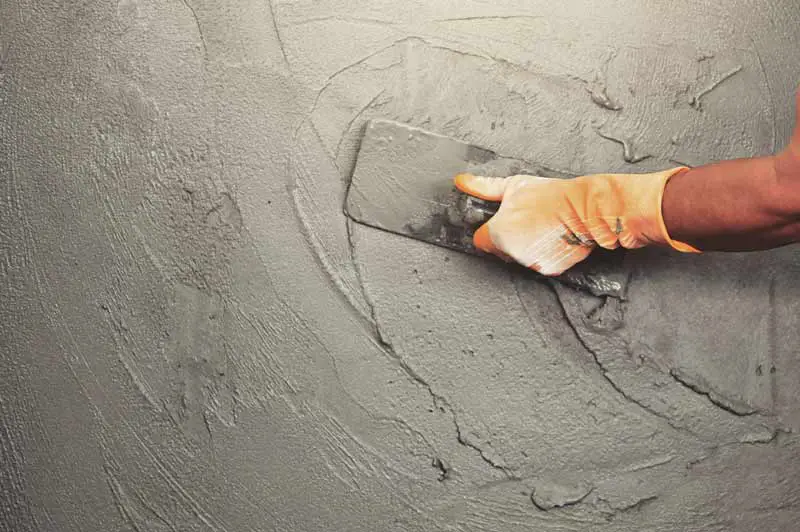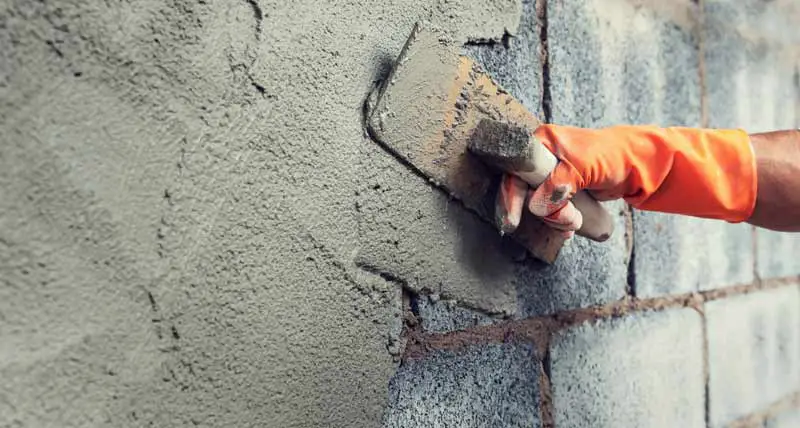
Plaster is a material that has been used since ancient times to cover and decorate walls. Plaster comes in many forms, but lime and cement plasters are some of the most common. Although they have similarities, there are distinct differences between them. So what are these main differences?
Cement plasters are harder, waterproof and usually cheaper than lime ones. Sometimes, hardness and waterproofing characteristics are important, but they can also cause dampness and structural issues. Lime plasters are softer, breathable and flexible. This helps improve longevity and alleviate issues with moisture and building movement.
What is plaster?
Plaster is a type of material that is used for covering and protecting walls and ceilings. There are many different types of plasters, from gypsum to clay. In this article, we look at lime and cement-based plasters, two very commonly used plasters.
Both lime and cement can be used to make plasters, each with unique characteristics. Lime plaster is a traditional plaster made from either hydraulic or non-hydraulic lime mixed with sand, water and other additives.
Lime plasters provide good breathability and vapour permeability, allowing moisture to evaporate from within the wall structure. Cement plaster, on the other hand, is a modern form of plaster made using Portland cement as the binding agent.
Cement plasters provide superior strength and water resistance compared to lime plasters, but they have poor breathability and vapour permeability, leading to damp problems if not managed correctly. Both plaster types are available in various colours and textures depending on their intended use.
Lime Plaster

Lime plaster is a traditional, natural material that has been used for many centuries for walls, ceilings and many other decorative finishes. It’s made from a combination of either natural hydraulic lime (NHL) or non-hydraulic lime (fat lime or lime putty), sand and water. Other materials, such as hairs and fibres, are sometimes added to lime plasters to help improve strength.
The binders (lime) and sands are mixed to form a sticky wet material that can be applied to walls or other surfaces. The resulting finish is breathable and flexible yet highly durable – enough to withstand everyday wear and tear.
In addition to providing a beautiful aesthetic, lime plaster also offers great insulation benefits due to its high thermal mass—it absorbs heat during the day. It radiates it back out at night, helping regulate your home’s temperature. Plus, because of its natural composition, it’s non-toxic and environmentally friendly too!
Whether you’re looking for something with a more traditional look or want something aesthetically pleasing and practical, lime plaster provides an excellent solution. And with its long-lasting durability and timeless charm, it’s no wonder why this classic material continues to be one of the most popular choices for plaster finishes today!
Advantages & Disadvantages of Lime Plaster
Lime plaster is an age-old material with a timeless look, but it can be tricky to use and apply properly. It’s ideal for interior and exterior surfaces, as it is breathable and vapour permeable. But before you take the plunge, let’s look at some advantages and disadvantages of using lime plaster in your home.
One of the biggest advantages of using lime plaster is its durability. Unlike cement plasters which can crack and break up over time, lime plasters are much more resistant to damage and wear. Lime plasters are also known for their autogenous healing, which is a fancy way of saying they can self-heal small cracks over time.
On the downside, however, one thing to consider with lime plaster is that once applied, it will need extensive aftercare until it has set. It cannot cure too quickly. In the first few days and even weeks, it will need regular attention. Regular mist spraying is necessary to ensure the plaster won’t dry too quickly.
Although this may sound like a lot, lime plasters are very manageable in moderate weather. Even in hot conditions, draping damp hessian over the plaster will help slow the drying process. When correctly looked after, lime plasters can create a truly stunning finish!
To conclude, lime plaster could be just what you need if you’re looking for an aesthetically pleasing finish with great longevity! With proper preparation and careful application techniques, you can enjoy beautiful results without worrying about damage or repairs anytime soon!
Cement Plaster

Cement plaster is popular among homeowners looking for an easy-to-apply yet durable finish. They are ideal for both interior and exterior surfaces, as they’re strong enough to withstand wear and tear. Additionally, cement is widely available and usually cheaper than lime alternatives.
When it comes to the actual application process, cement plaster is much easier than lime plaster. However, a downside of cement plaster is that it doesn’t offer the same breathability or vapour permeability as lime plaster. This means moisture can become trapped between the walls and cause damage over time if not properly ventilated.
Cement plasters are made by mixing portland cement, sand and water. In some cases, a plasticiser will be added. This helps improve the workability of cement. In some cases, hydrated or builders lime powder is added to help improve workability.
In conclusion, cement plaster is an excellent choice for those who want an easy-to-apply finish with long-lasting results. Just take proper steps to ensure your walls are properly ventilated to prevent moisture build-up!
Advantages & Disadvantages of Cement Plaster
Cement plaster is a popular choice for many home projects, offering a strong and durable finish to both interior and exterior walls. It’s often used as an alternative to traditional lime plasters, providing better adhesion to some surfaces. However, there are some advantages and disadvantages to using cement plaster that should be taken into consideration before beginning any project.
Cement plasters’ biggest advantages are their low price, high availability and ease of use. Lime plasters can sometimes take upwards of a month to cure, whereas cement plasters can fully cure in around 48 hours. This significantly improves build time and reduces the required aftercare.
On the downside, cement plaster is extremely hard. Whilst this is a good thing for many buildings, it means cement is brittle. Any movement within the building can cause cracking. Additionally, movement can even cause the cement to delaminate from the wall!
Due to their hardness, cement plasters are unsuitable for older buildings originally constructed with softer lime materials. If you own a building that was built before 1930, it’s very likely using cement will cause more damage than good. If in doubt, always go for lime plaster instead.
Overall, cement plaster has some drawbacks compared to traditional plasters like lime. However, its superior cost and ease of use make it well worth considering when deciding on a finish for your next project!
Difference between Lime and Cement Plaster
Lime and cement plaster are two popular choices for many home projects. Lime plaster is a traditional approach that has been around for centuries and is known for its breathability and flexibility. In contrast, cement plaster offers better adhesion, increased build rates, and lower cost.
Both plaster types have advantages and disadvantages that should be considered before beginning any project. For example, lime plaster is breathable and flexible and usually creates a more beautiful finish than cement plasters.
Cement plasters, on the other hand, are easier to use, cost less and are more suited to modern building techniques.
Ultimately, which type of plaster you choose depends on your project’s needs—if you’re looking for something more flexible or breathable, then lime may be the right choice. Still, cement could be the way to go if you need something that can withstand harsher conditions such as intense heat or cold.

